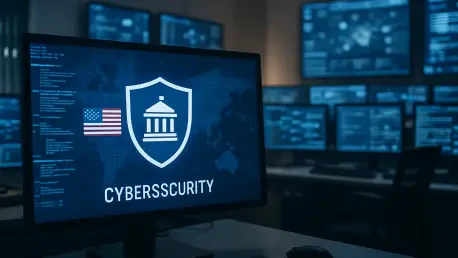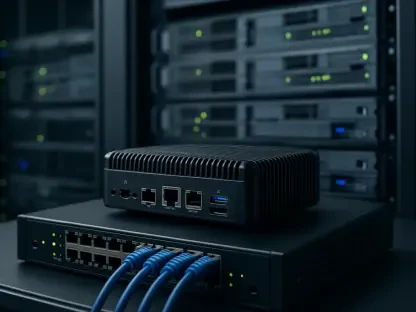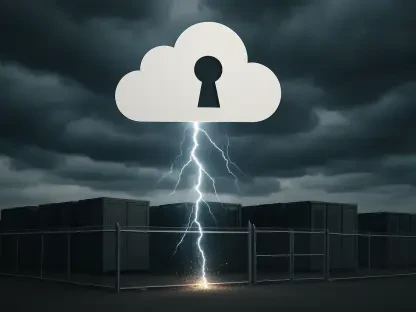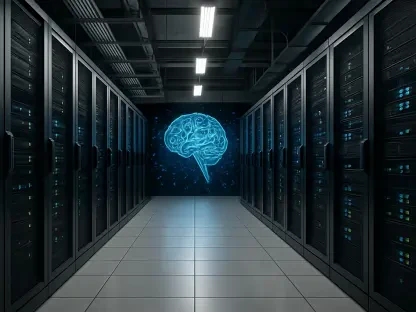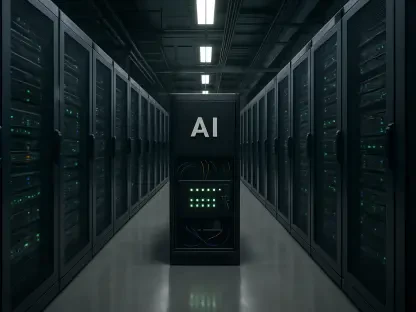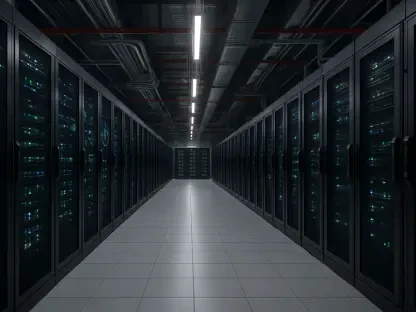In an era where digital threats are becoming increasingly sophisticated, government cybersecurity stands at a critical crossroads, grappling with vulnerabilities that outdated strategies like “trust but verify” can no longer address effectively. Public sector agencies, tasked with protecting sensitive data and critical infrastructure, face relentless attacks from nation-state actors and other adversaries who exploit supply chains, identities, and third-party integrations. Insights shared by Morey Haber, Chief Security Officer at BeyondTrust, during a prominent cybersecurity event underscore the pressing need for a transformative approach. The traditional reliance on periodic checks and perimeter defenses falls short against modern threats that operate with stealth and persistence. As government systems grow more dependent on commercial software and diverse vendor ecosystems, the urgency to adopt a continuous, enforceable, and dynamic security framework becomes undeniable. This discussion sets the stage for exploring how agencies can fortify their defenses against an ever-evolving cyber landscape.
Rethinking Outdated Security Paradigms
The conventional “trust but verify” model, once a cornerstone of cybersecurity, is proving inadequate in the face of today’s complex threat environment. Paired with perimeter-based defenses such as risk scorecards and vendor assessment questionnaires, this approach offers only a superficial layer of protection that fails to counter the advanced tactics employed by contemporary adversaries. Attackers, often backed by significant resources, bypass traditional barriers by targeting subtle vulnerabilities like misconfigurations and third-party weaknesses. Haber points out that periodic evaluations, while necessary as a baseline, cannot keep pace with threats that evolve daily and operate with extended dwell times. Government agencies must recognize that static security measures are no longer sufficient to safeguard critical systems against persistent and sophisticated infiltration methods.
Moreover, the shift in attack strategies necessitates a complete overhaul of how cybersecurity is conceptualized in the public sector. Rather than focusing solely on defending the outer edges of networks, attention must turn to the intricate web of interactions within and beyond organizational boundaries. Modern threats exploit not just technological gaps but also human and procedural weaknesses, often lingering undetected for months. This reality demands a move toward continuous monitoring and verification processes that adapt to emerging risks in real time. By acknowledging the limitations of outdated models, government entities can begin to lay the groundwork for a more resilient posture, one that prioritizes depth over breadth in security practices and prepares for the unexpected nature of cyber warfare.
Addressing Vulnerabilities in Supply Chains
Supply chain attacks have emerged as a formidable challenge for government cybersecurity, exploiting the intricate dependencies on external vendors and commercial software. Unlike direct assaults on system perimeters, these threats target underlying flaws in vendor ecosystems, making them exceptionally difficult to detect and mitigate. With public sector agencies relying heavily on diverse software solutions, a single weak link can compromise entire networks, providing attackers with unauthorized access to sensitive data. Haber emphasizes that such risks are amplified by prolonged attack timelines, where adversaries embed themselves within systems for extended periods, waiting for the opportune moment to strike. Surface-level checks and one-time validations fall short in addressing these deeply rooted vulnerabilities.
To combat supply chain risks, a far more rigorous approach is essential, focusing on continuous scrutiny of every component and interaction within the vendor network. This means going beyond initial assessments to implement ongoing monitoring mechanisms that track changes and anomalies in real time. Government agencies must establish stringent criteria for vendor engagements, ensuring that security is embedded into every stage of procurement and service delivery. By prioritizing transparency and traceability, such measures can help identify potential threats before they escalate into full-blown breaches. The complexity of supply chains demands a proactive stance, where the assumption of risk is constant, and mitigation strategies are as dynamic as the threats themselves, safeguarding critical infrastructure from insidious exploitation.
Embracing Zero Trust as a Core Principle
Zero Trust Architecture (ZTA) represents a paradigm shift in government cybersecurity, offering a non-negotiable framework that assumes no interaction—be it user, data, or asset—can be inherently trusted. Unlike traditional models that rely on perimeter defenses, ZTA demands continuous verification at every touchpoint, integrating behavior analysis, access controls, and secure procurement practices. Haber highlights that this approach extends to ensuring digitally signed code aligns with purchase orders, preventing tampering or fraud during software delivery. By treating every action as a potential risk, ZTA provides a robust defense against both internal and external threats, particularly those infiltrating through supply chain vulnerabilities, thereby fortifying the integrity of government systems.
Implementing ZTA requires a comprehensive overhaul of existing workflows to embed security into every operational layer. This involves not only authenticating identities but also monitoring how resources are accessed and data is handled across all interactions. Such a holistic strategy helps isolate indicators of compromise early, minimizing the potential impact of breaches. For government agencies, adopting ZTA means redefining trust as a concept that must be earned repeatedly through verifiable actions rather than assumed based on initial checks. This shift is crucial for addressing the sophisticated nature of modern cyber threats, ensuring that even the smallest lapse does not become a gateway for widespread disruption. The path to resilience lies in this unwavering commitment to verification and control.
Fortifying Identity and Access Management
Identity security stands as a vital component of a modern cybersecurity framework, extending far beyond just privileged accounts to encompass every user interacting with government systems. In an environment where stolen credentials and unauthorized access pose significant risks, ensuring visibility and accountability is paramount. Haber advocates for solutions like Privileged Access Management (PAM) to record sessions and validate the appropriateness of access, thereby reducing the likelihood of misuse. This practice not only protects against external threats but also mitigates internal risks, where human error or malicious intent could compromise sensitive operations. A focus on identity security is essential for maintaining the integrity of critical infrastructure.
Building on this, government agencies must adopt a broader approach that applies stringent access controls to all identities, not just those with elevated privileges. This means implementing continuous monitoring to detect unusual behavior patterns that might indicate a breach, coupled with robust authentication mechanisms to verify legitimacy at every step. Such measures ensure that even if credentials are compromised, the damage can be contained through rapid response and isolation. By prioritizing identity as a core element of defense, public sector entities can close significant gaps that attackers often exploit, particularly in complex supply chain interactions. The emphasis on comprehensive access management reflects the evolving nature of threats, where every entry point must be safeguarded with equal diligence.
Leveraging Contracts for Security Enforcement
Procurement contracts provide a powerful tool to enforce cybersecurity standards within government operations, moving beyond generic certifications to demand measurable and specific outcomes. Haber suggests incorporating clauses that allow agencies to audit vendors on critical issues such as source code origins and potential geopolitical risks linked to foreign entities. Additionally, accountability mechanisms like indemnification ensure vendors bear the cost of remediation in the event of a breach due to their lapses. This approach transforms security from a voluntary compliance task into a fundamental business risk for vendors, incentivizing them to prioritize robust practices and align with stringent government expectations.
Beyond setting standards, these contractual obligations must be backed by rigorous enforcement and regular oversight to ensure compliance is not merely theoretical. Agencies should establish clear benchmarks for security performance, coupled with periodic reviews to assess vendor adherence over time. Such a strategy not only raises the bar for cybersecurity across the supply chain but also fosters a culture of accountability where lapses have tangible consequences. By leveraging the power of procurement agreements, government entities can drive systemic change, ensuring that every partner in their ecosystem contributes to a fortified defense. This contractual rigor is a critical step in addressing the multifaceted risks inherent in modern digital operations.
Anticipating Quantum Computing Challenges
The emergence of quantum computing introduces a profound threat to government cybersecurity through the “harvest now, decrypt later” strategy, where adversaries steal encrypted data today for future decryption. This looming risk underscores the need for public sector agencies to adopt quantum-resistant encryption methods to protect digital identities and supply chain communications. Haber stresses that proactive preparation is not a luxury but a necessity, as the timeline for quantum advancements remains uncertain yet inevitable. Failure to act now could render current security measures obsolete, exposing critical systems to unprecedented vulnerabilities that cannot be easily mitigated once the technology matures.
To address this challenge, government entities must integrate quantum-resistant encryption into their long-term planning, prioritizing it alongside immediate threat responses. This involves not only upgrading existing systems but also ensuring that new digital initiatives are built with future-proof security in mind. Collaboration with industry experts and research bodies can accelerate the adoption of viable solutions, while policy frameworks should incentivize vendors to align with these emerging standards. By taking decisive steps today, agencies can safeguard sensitive data against tomorrow’s threats, maintaining trust in digital infrastructure. The urgency of this preparation highlights the forward-thinking mindset required to navigate the evolving cyber landscape effectively.
Driving Cultural Change in Security Leadership
A fundamental cultural shift is imperative for government cybersecurity leaders to move beyond risk-averse mindsets that stifle innovation. Instead, the focus should be on enabling secure digital transformation from the outset, adopting a “secure by design” philosophy that integrates protection into every initiative. Chief Information Security Officers (CISOs) play a pivotal role in championing this change, ensuring that security is not an afterthought but a foundational element of strategic planning. Haber notes that embracing calculated risks with robust safeguards can drive progress while maintaining resilience, a balance critical for public sector entities navigating complex digital environments.
Additionally, this cultural evolution must emphasize the ongoing maturity of existing technologies rather than solely chasing new solutions. Continuous assessment of vendors and implementations ensures that systems remain secure throughout their lifecycle, avoiding obsolescence or unmitigated risks. Leadership must foster an adaptive approach where cybersecurity is treated as an iterative process, responsive to emerging threats and technological advancements. By embedding security into the organizational ethos, government agencies can cultivate an environment where innovation and protection coexist, ensuring sustainable progress. This philosophical pivot is essential for building a future where digital trust is both achievable and enduring.
Building a Resilient Future for Public Sector Security
Reflecting on the insights shared during the GovWare event, it’s evident that government cybersecurity has undergone a pivotal transformation by moving away from outdated “trust but verify” models toward comprehensive, continuous frameworks. The adoption of Zero Trust Architecture has proven instrumental in redefining trust through ongoing verification, while identity security and contractual enforcement have addressed critical vulnerabilities in supply chains. Preparations for quantum computing threats have highlighted a forward-thinking approach that prioritizes long-term resilience. As a next step, agencies should focus on integrating these strategies into cohesive policies, fostering collaboration with industry partners to develop innovative solutions. Investing in workforce training to adapt to evolving security paradigms will further strengthen defenses. By embedding security into every facet of operations and maintaining vigilance against emerging risks, the public sector can build a robust digital foundation capable of withstanding future challenges.
